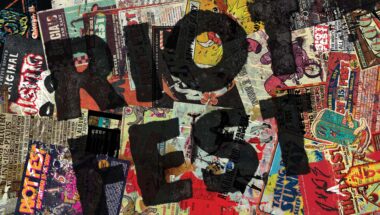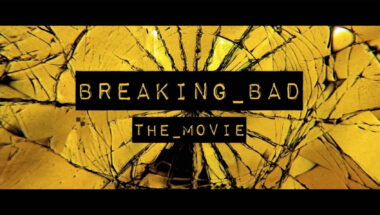The vampire movie is one of the richest and most adaptable traditions in movie history. Bram Stoker’s epistolary novel Dracula alone has inspired dozens, if not hundreds, of adaptations of varying cost and quality, each with its own unique angle, from FW Murnau’s legally murky quasi-adaptation Nosferatu to Bela Lugosi’s bow as the first Universal monster to Christopher Lee playing the Count in ten different films.
Francis Ford Coppola’s adaptation connected the rise of cinema technology, death of the aristocracy, the birth of science and madness colliding with ancient ideas and religious dogma in his faithful adaptation. Werner Herzog’s gorgeous Klaus Kinski and Isabelle Adjani starring remake of Nosferatu returns all the Stoker elements Murnau cut out, and changes the ending so evil wins. Paul Morrissey’s Blood For Dracula (released in the US as Andy Warhol’s Dracula) recasts the count as an anemic member of the aristocracy, digresses to weird misogynist camp tirades and ugly sex scenes and uglier gore. Udo Kier’s count has his arm chopped off in a distinctly italian fashion. It’s probably Morrissey’s best film.
If there is a vampire story as influential as Dracula, it’s Carmilla. Written in 1872 by Joseph Sheridan de Vanu, Carmilla introduced the lesbian vampire as a literary figure. Adapted by Roger Vadim in 1960 as Blood and Roses, a haunting and restrained gothic romance starring his second wife Annette Stroyberg. Vadim also invented five or so other erotic cinematic subgenres (and directed Barbarella). In adapting Carmilla in rich technicolor he birthed the sensibilities of vampire erotica standard bearers Jean Rollin and Jesus Franco. The lesbian vampire subgenre is its own beast, with minor masterpieces ranging from Franco’s Vampyros Lesbos (fetishy, trashy), Vicente Aranda’s Blood Spattered Bride (poetic, stark), Joseph Sarno’s The Devil’s Plaything (psychotically horned), or Harry Kumel’s Daughters of Darkness (Conformist-level lush, precise).
Rollin’s 1971 film Requiem For a Vampire (released in the US as Caged Virgins) is deeply strange. Almost dialog free, building on Rollin’s visual vocabulary to string together scenes of gunfights, clowns, our lead girls being buried alive, anonymous women being whipped in dungeons until the plot is announced without fanfare halfway through the film. Rollin manages to take 90 minutes of confused pornography end on a humane, tender scene with the last moments of the last vampire on earth. His later, 1982 vampire/zombie hybrid Living Dead Girl is more about how two people who love one another despite their relationship being figuratively and literally toxic–the vampire of the title is resurrected by toxic waste dumped in her crypt. Not quite an entry as much as an insane sideroad, Tobe Hooper’s Lifeforce is about a species of nude vampires from space that decimate 1985 London in cosmically troubling fashion. It’s somehow not sexy at all.
1983’s The Hunger is likely the best movie produced in the form. Tony Scott auditioned European porn icon Sylvia Kristel before deciding on euro-cinema royalty Catherine Deneuve, who he cast alongside David Bowie as immortal eurotrash slumming around New York’s goth clubs to pick up victims. The Hunger’s cinematic lineage is more in line with Nicolas Roeg’s rhythmic cinema than the erotic Eurotrash gold it shares plot details with, but it remains the most stylish movie released by a Hollywood studio maybe ever. Susan Sarandon discovers her queerness through meeting Deneuve in a way that feels more genuine than every girl/girl scene in Rollin or Franco’s oeuvres. You get the feeling Tony Scott is getting off more on the lighting than the sex, which is more character-based than tittilating. Sarandon’s sweat soaked hair and blood caked smile as her dumb boyfriend tries to talk her down is the reason movies are made.
The Hunger approaches vampirism as both an addiction and a disease, a theme that would come to dominate the genre more and more into the next three decades. Swedish director Tomas Alfredson’s 2004 film Let the Right One In is almost a scene for scene remake of The Hunger, but brilliantly recasting the two leads as children. Instead of revealing Sarandon’s cloaked sexuality, the darkness and loneliness in the adolescent boy as he’s falling in love for the first time are given purpose.
David Cronenberg’s Rabid went so far as to cast a porn legend, it being the only mainstream film Marilyn Chambers ever starred. Rabid recasts the vampire myth as a polymorphously perverse Typhoid Mary. Chambers, after receiving experimental plastic surgery for a motorcycle accident, grows a barbed penis out of her armpit and assaults anyone who comes close by hugging them, creating a plague of zombies. It’s the most bizarre of Cronenberg’s revulsive premises but somehow never feels silly. While of a piece with the weird generational trans-misogyny of his peers at the time (De Palma’s Dressed to Kill, Dario Argento’s Tenebre), Chambers as Rose is portrayed as a sexual predator in one scene, a victim of barely controllable drives the next–Cronenberg’s detached version of a madonna/whore complex. She lies prone on the bathroom floor of her nerdy friend’s apartment, wracked with guilt over her desire to tear her clothes off (and drink her blood). While Cronenberg has a much broader definition of sexuality than his peers, he still allows himself to fall into stereotypes for his theoretical approach to mutable sexuality. Chambers can pick up anyone she wants at a porno theater, a sauna, a hotel lobby, a barn–it’s like her powers only work on 70s porn-film locations.
Along with vampire porn, the 70s also gave us vampire realism in the form of Salem’s Lot and The Night Stalker, which both take a Dracula stand-in and drop him into a specific real life location (rural Maine and Vegas, respectively). Night Stalker writer Richard Matheson’s 1954 novel I Am Legend is still the best vampire story ever written, despite all three of film adaptations taking out the vampires to make it a story about a guy who survives the apocalypse. George Romero’s 1978 film Martin, which takes the sexy gothic imagery associated with Dracula and dumps it all for what we’d now call a suburban incel narrative, using a Pittsburgh suburb to explore an extremely lonely character who we never get a good answer if he is or isn’t a vampire. Either way, he acts like one, fantasizing about black & white cinematic rendezvous with women and then brutally drugging and cutting their wrists. Martin tells his superstitious relative “there’s no magic, not really”, which does a pretty good job of summing up 20th century psychological horror. After all, the deepest roots of the myth come out of the post-mortem symptoms of tuberculosis.
Kathryn Bigelow’s Near Dark was the first to approach the vampire as an action premise, with bar massacres and gunfights and showdowns like a Peckinpah film. Adding horror iconography into an action template would lead to Blade, From Dusk Til Dawn and John Carpenter’s Vampires, along with pretty much every “spooky” WB/CW tv series. Bigelow’s fixation on violence still stands in contrast against the movie’s more tragic romance elements, with Adrian Pasdar and Jenny Wright’s relationship always feeling like a distraction from waitresses’ arteries being emptied into beer glasses. Near Dark is the first time since I Am Legend that someone took the rules as a given and just let us watch a police standoff where sunlight is more dangerous than the bullets. It’s a western, it’s a biker movie. Most importantly, it’s Bill Paxton in a leather jacket grinning, mouth dripping red. But the action-vampire subgenre’s absolute greatest scene is the opening 20 minutes of Russian urban fantasy Night Watch. Undead good guy Anton Gorodetsky is hunting a vampire, so in order to fight them he has to drink their blood, so the film introduces him vomiting blood on the subway like a drunk.
Near Dark’s appeal is much like The Hunger, in the idea that there is a world where people are more alive than you could ever be, but the price they pay for it is endless need. This too metastasized into a mini-genre of its own. Released very closely to one another in the 90s, both set in New York academia, Habit and The Addiction are very direct attempts at linking AIDS, addiction, and vampirism as interchangeable. Larry Fessenden’s Habit is more of a naturalistic attempt at the form. Fessenden, who writes/directs/edits/stars in the film, is a drunk who rebounds with a woman who’s into blood play during sex. The movie flirts for nearly its entirety as a “is she/isn’t she” piece, much of it is proto-mumblecore cinema about being drunk and bad at relationships (Fessenden would later appear in half a dozen mumblecore movies and You’re Next). The final ten or so minutes finally spiral fully into genre detournement as the tropes all finally come to bear in a gothic finale. Abel Ferrara’s ultra-stylish black and white The Addiction follows philosophy student Lilli Taylor as she is attacked by a vampire and then proceeds to treat it exactly like heroin addiction for 90 minutes, down to the nihilistic conversations with peak of his powers Christopher Walken. He rattles off “the entire world’s a graveyard” then belittles Neitszche like it’s impressive to anyone out of undergrad.
Ferrara’s earlier film Driller Killer is an enormous influence on 2019’s entry into the vampire-as-addict genre, Joe Begos’ Bliss. The film follows a young painter, Dezzy, as she relapses into coke addiction in order to break a period of creative block. Shot on film in Los Angeles, this is a very intent 80s horror genre exercise, but it feels relevant and not masturbatory in the way that so many of these tributes do. Dezzy blacks out on a mix of coke and dmt and has sex with her friends. She begins painting her masterpiece, then finds out they have turned her into a vampire. Bliss is not a leap forward from the 90s version of this narrative but finds new places to go with it. Most specifically, to extreme gore, strobing psychedelic scenes, and characters who genuinely don’t ever feel rational, and therefore feel extremely human. Bliss’s characters suck at being people, so Dezzy functions better as a murderer than she ever did as a girlfriend or even a creative person. She feels real, though, blasting shitty metal and wearing Death Waltz Records shirts through crappy bars, bad parties and endless driving sequences. (She’s someone who has skulls on her shower curtains. You know at least one person like this.)
The gold standard of vampire-as-junkie is Jim Jarmusch’s late career (maybe final) masterwork Only Lovers Left Alive, wherein Tilda Swinton and Tom Hiddleston play achingly cool immortals who love each other and feel the death of everything bohemian as the planet dies. Only Lovers, named after a Long Blondes song, makes a very good case for wasting your entire life on dithering in the arts while you get fucked up with your soulmate. Jarmusch, who’s been cool for long enough to know that all coolness eventually ends, openly toys with this lifestyle as both beautiful and untenable. The world of literature and music these characters live in is done, hundreds of years with a horizon line terminating in their vision ahead. At the very least it is through with them. There is a bittersweet element of the whole undead thing being worth it until they’re burying a body and fleeing the country with the shakes. In the final rush of the film, our exhausted romantic leads have quit their sophisticated methods and gut a cute couple in the street. The final metaphor is not for vampirism as addiction, it’s the bohemian conception as vampiric. While these characters make art, they are more cosmopolitan archivists of their obsessions than contributors. Maybe Jarmusch feels this way about himself, his films all kind of being about a place, a type of person, a sound more than ever really being stories.
What is a vampire? Is it someone who feeds an addiction to survive? An unkillable villain in an action set piece? Is it someone who preys on the weak and the poor because of their station? Is it a heart-wrending excuse for sex scenes? Is it a modern myth used to explain away disease? Or in Only Lovers case, it could be someone who has spent their whole life cultivating a distance between them and other people. Vampires are a folkloric lens we can look at ourselves and our subconscious desires. Every version of the vampire myth is a way of exploring death — self destructive impulses, understanding senseless mass murder, immovable class stratifications, exploring taboo sexuality. These films can approach this rich metaphor base from the other direction, from the prurient aspect on up. That’s the endless appeal to malleable trash, you can always get money to make a movie about a vampire. It begs the artist to chase their strangest impulses and reveal themselves.


